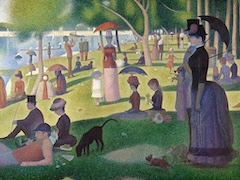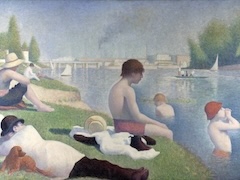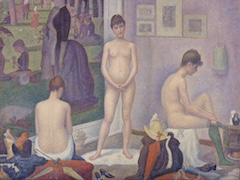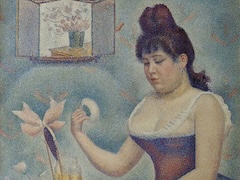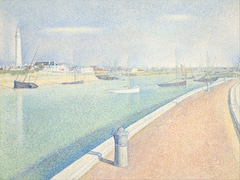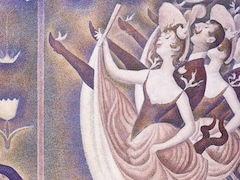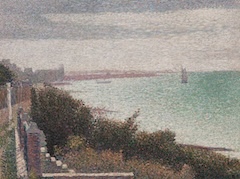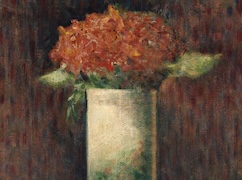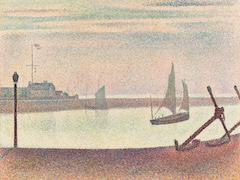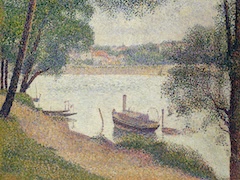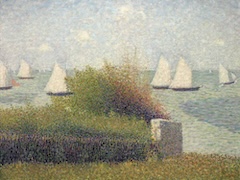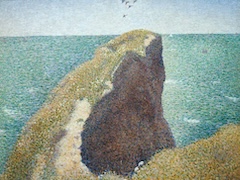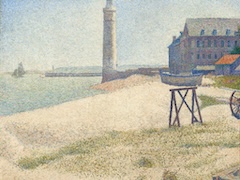The Circus by Georges Seurat
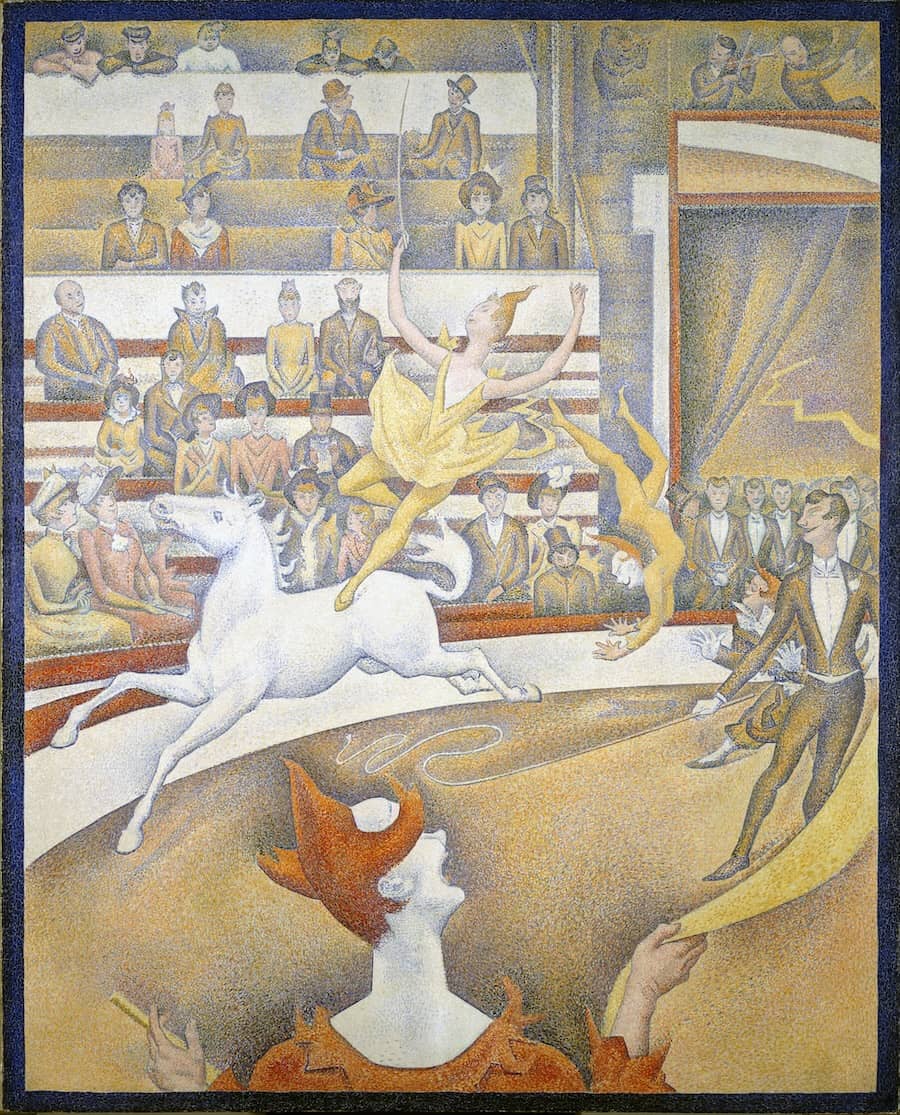
The Circus is beyond any question the most baroque work Seurat ever painted. The unfinished canvas is composed of circles, spirals, and ellipses. Exceptionally, it is built up on horizontals with the entrance to the ring at the right the only vertical break.
Seurat was fond of novels by the Goncourt brothers, and here gives us a visual counterpart to the Freres Zemgano, a tale about the circus. Lucie Cousturier wrote that the composition "sets itself the aim of holding within one sweeping curve all the upward-running lines denoting circus fun and games." The movement from right to left, that of the lady bareback rider who, "a modern goddess of grace and freedom," is doing acrobatics on the white horse, is counterpoised by the movement of the clown in the center with the garish wig, who arises perpendicularly from the foreground.
The figure in the first row of seats, with a silk hat and a peak of hair visible under it, is the painter Charles Angrand, a friend of Seurat's.
This work was exhibited in its unfinished state at the seventh Salon des lndépendants, from March 20 to April 27, 1891. Seurat died during the exhibition.
The layout of this painting almost seems to have been done by some mechanical process, a tracing in blue. That we can even think this is no doubt accounted for by its unfinished state, as Feneon suggested in a letter where he gave it as his opinion that The Circus is finished only "so far as the background is concerned ( rows of spectators merely indicated in blue)."
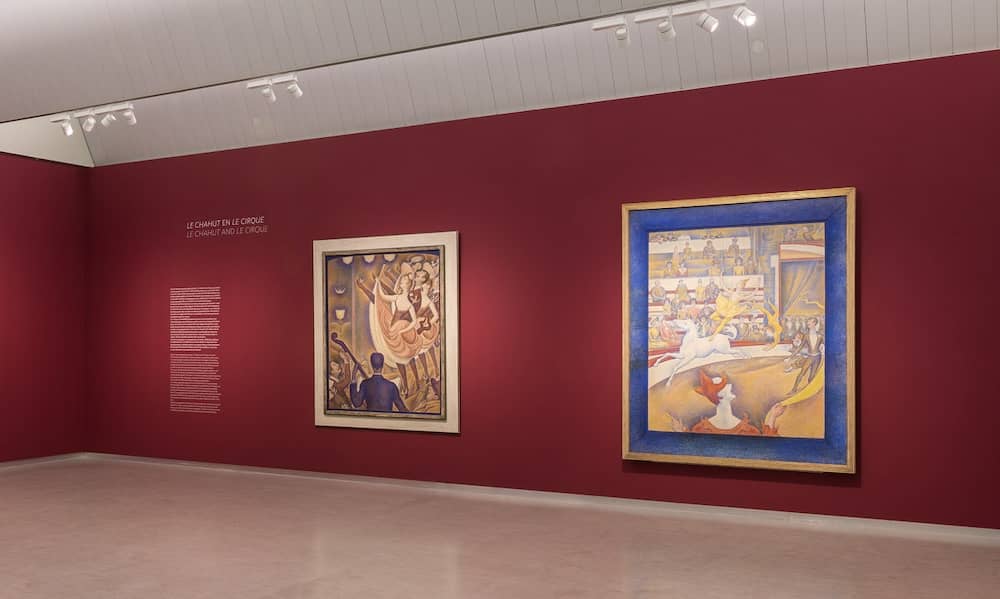
Seurat painted the flat frame for the painting, and it bears his signature.
Paul Signac, who was able to purchase the picture quite cheaply, noted in his diary: "Seurat's family, though very well off, is selling everything."

